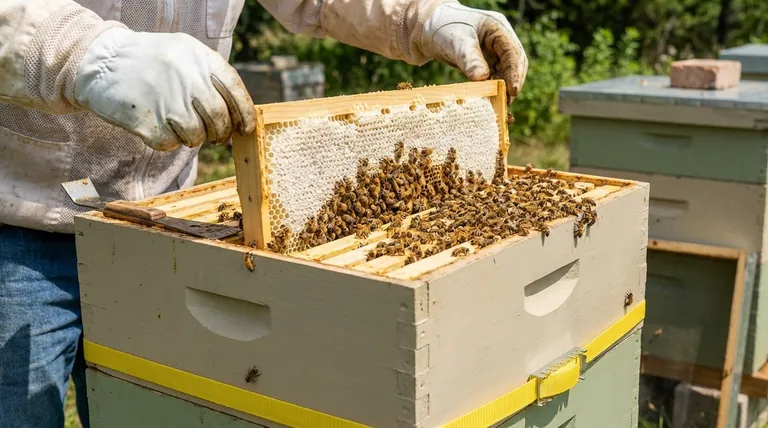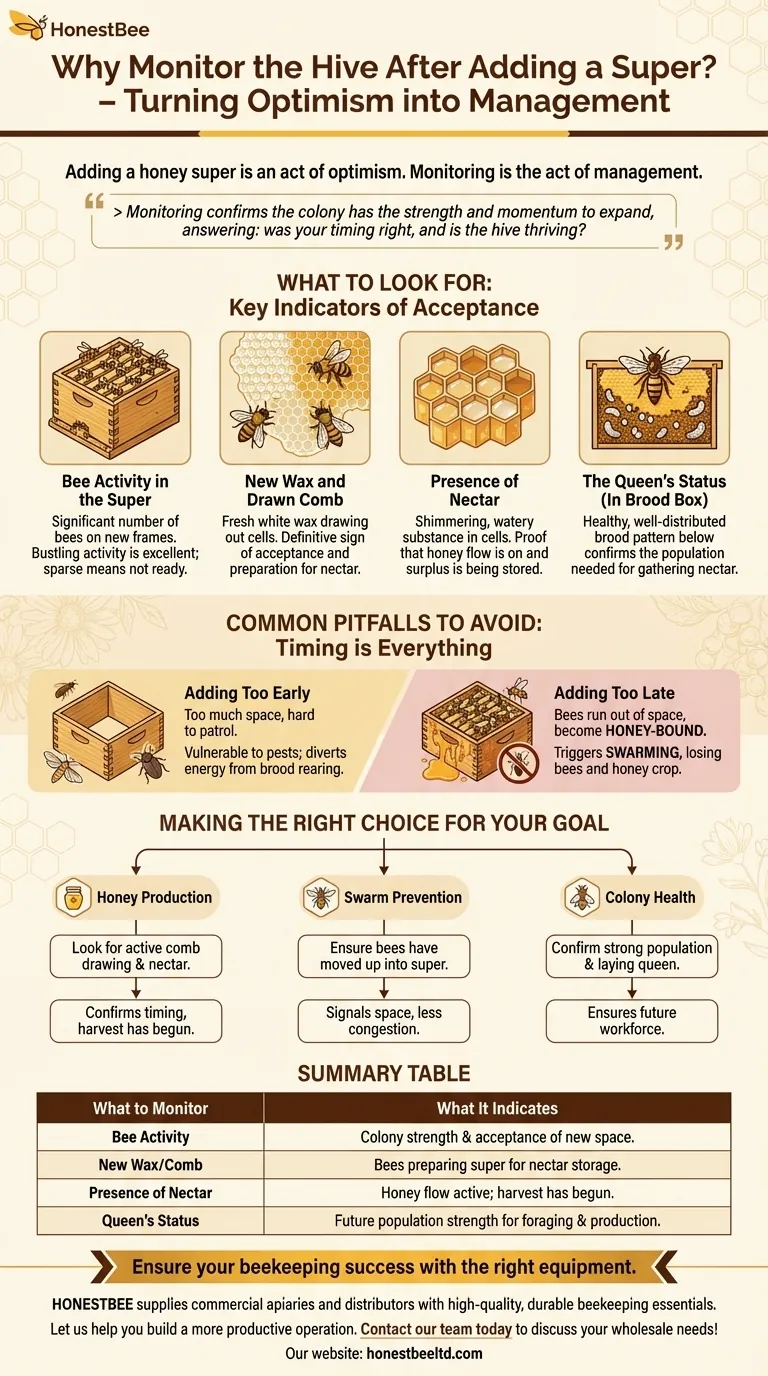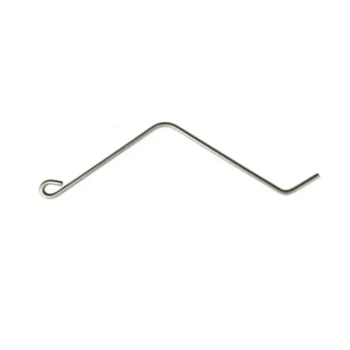Adding a honey super is an act of optimism. Monitoring the hive after you add it is the act of management that turns that optimism into a successful honey harvest. It is essential because it verifies that the bees are actually using the new space, allowing you to track honey production and confirm the overall health and productivity of the colony.
Monitoring after adding a super isn't just about looking for honey; it's about confirming the colony has the strength and momentum to expand. This simple check answers the critical question: was your timing right, and is the hive truly thriving?

What to Look For: Key Indicators of Acceptance
A quick inspection a week or so after adding a super will tell you everything you need to know. You are looking for clear signals that the colony has accepted the expansion and has the resources to utilize it.
Bee Activity in the Super
The very first sign of success is the presence of bees in the new super. When you open the hive, you should see a significant number of bees walking on the top bars of the new frames.
A sparse population indicates the colony may not be strong enough to expand yet, while a super bustling with activity is an excellent sign.
New Wax and Drawn Comb
Bees must build out wax comb on the new frames before they can store honey. Look for fresh, white wax being used to "draw out" the cells of the foundation.
This is a definitive sign that they have accepted the space and are preparing it for nectar. If you see no new wax, they are not ready to use the super.
Presence of Nectar
Once the comb is partially drawn, you will see bees begin to deposit nectar. Look for a shimmering, watery substance in the bottom of the new cells.
This is the precursor to honey and is direct proof that the honey flow is on and the bees are actively storing surplus.
The Queen's Status (In the Brood Box)
The engine of the hive is the queen laying eggs in the brood boxes below the super. The workforce that fills the super is a direct result of her productivity weeks prior.
A healthy, well-distributed brood pattern confirms you have the population needed to gather nectar. A struggling queen means the super will likely remain empty.
Common Pitfalls to Avoid
Your decision to add a super is a critical management choice, and timing is everything. Monitoring helps you understand if you got that timing right and allows you to correct course if you didn't.
Adding a Super Too Early
Giving a colony too much space before they are ready can be counterproductive. The bees may struggle to patrol the extra territory, making it vulnerable to pests like wax moths or small hive beetles.
It also means the colony must work harder to maintain the hive's temperature and humidity, diverting energy that could be used for brood rearing and foraging.
Adding a Super Too Late
This is a more common and costly mistake. If you wait too long, the bees will run out of storage space in the brood boxes and start backfilling cells with nectar where the queen should be laying eggs.
This condition, known as being honey-bound, severely restricts the queen's ability to lay. It is a primary trigger for swarming, where the colony divides and you lose half your bees—and your potential honey crop.
Making the Right Choice for Your Goal
Your follow-up inspection provides clear data to guide your next steps.
- If your primary focus is maximizing honey production: Look for bees actively drawing comb and depositing nectar; this confirms your timing was right and the harvest has begun.
- If your primary focus is swarm prevention: Ensure the bees have moved up into the super, which signals they have enough space and are less likely to feel congested.
- If your primary focus is colony health: Use the inspection to confirm a strong population and see that the queen is still laying well in the brood box below.
Ultimately, monitoring transforms supering from a hopeful guess into a deliberate and effective management technique.
Summary Table:
| What to Monitor | What It Indicates |
|---|---|
| Bee Activity | Colony strength and acceptance of the new space. |
| New Wax/Comb | Bees are preparing the super for nectar storage. |
| Presence of Nectar | Honey flow is active; harvest has begun. |
| Queen's Status | Future population strength for foraging and honey production. |
Ensure your beekeeping success with the right equipment.
Effective hive management starts with reliable supplies. At HONESTBEE, we supply commercial apiaries and beekeeping equipment distributors with high-quality, durable beekeeping essentials—from supers and frames to protective gear and tools—through our wholesale-focused operations.
Let us help you build a more productive and profitable operation. Contact our team today to discuss your wholesale supply needs!
Visual Guide

Related Products
- Professional Galvanized Hive Strap with Secure Locking Buckle for Beekeeping
- Versatile Ratchet Hive Strap with S-Hooks for Secure Fastening
- Heavy-Duty Galvanized Steel W-Style Pallet Clip
- Multi-Functional Sliding Hive Entrance for Beekeeping
- V-Shaped Spring Hive Connector for Beekeeping
People Also Ask
- How should a cam buckle strap be installed for optimal performance? Master the Leverage for Maximum Tension
- What are hive straps and why are they used? Secure Your Hives Against Wind, Predators, and Transport
- What is the best length for straps used around beehives? Why 12 Feet is the Industry Standard
- Why are hive straps important for beekeepers? Secure Your Hives Against Wind, Predators & Transport
- What maintenance is required for hive straps? A Guide to Cam Buckle vs. Ratchet Strap Care



















